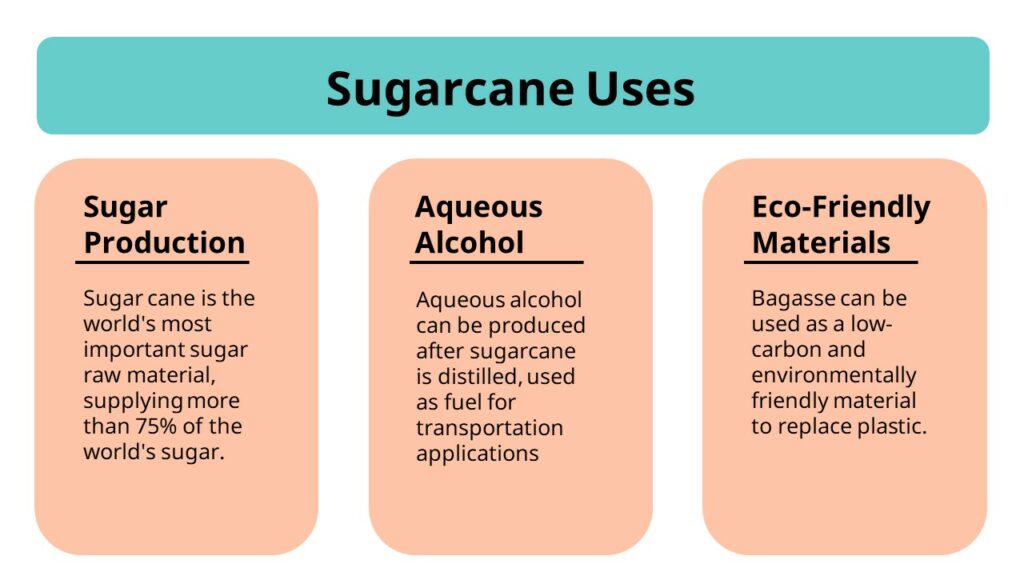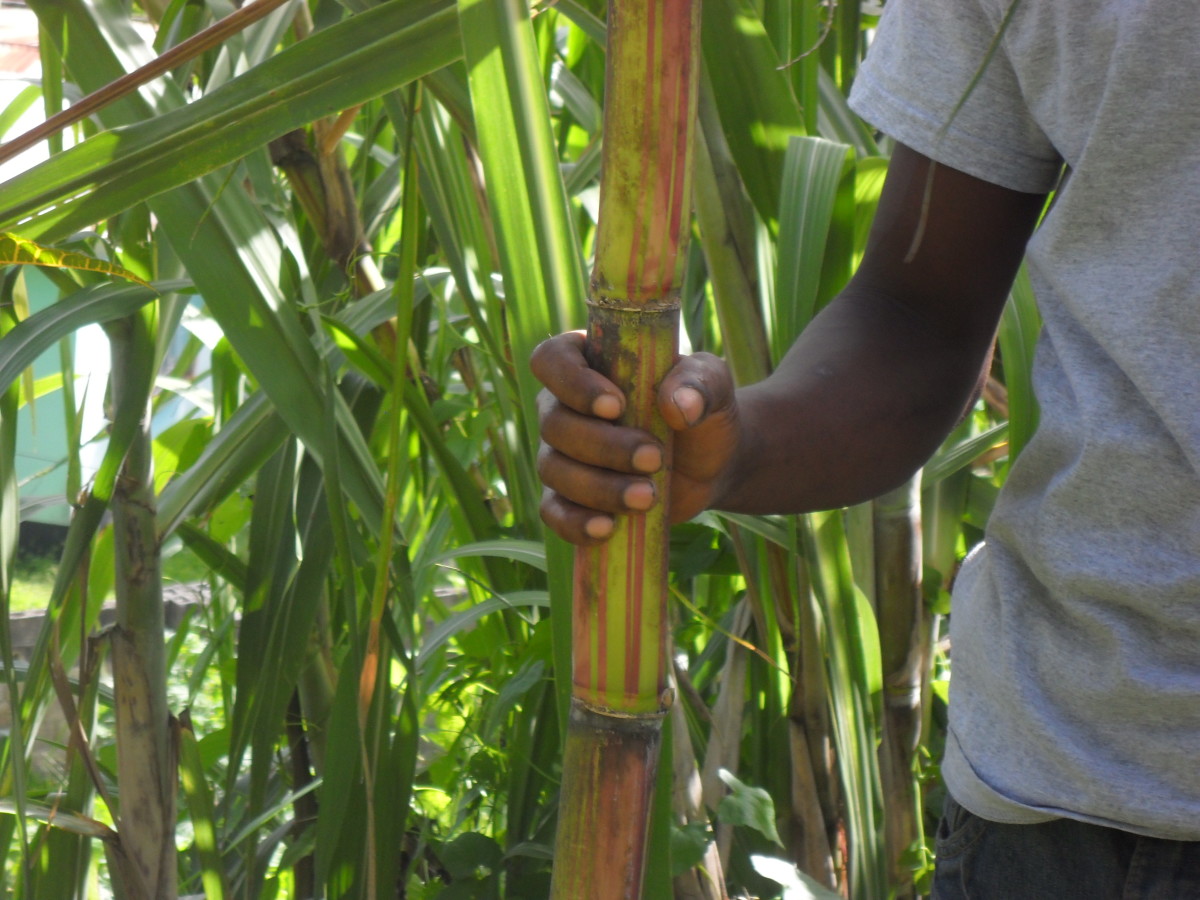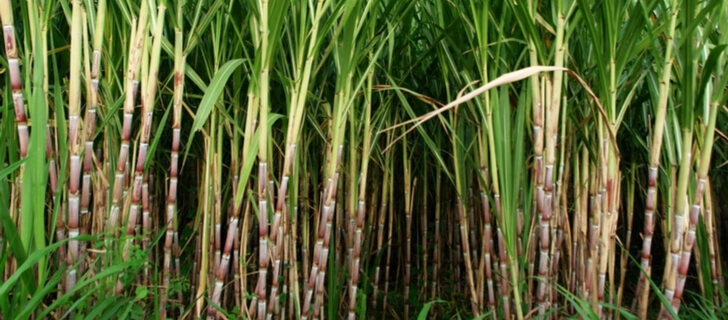Everything About Sugar Canes: What Are Sugar Canes Made Use Of For and Their Duty in International Farming?
Sugar canes act as a cornerstone of global agriculture, mainly recognized for their duty in sugar manufacturing. They also add to the production of spin-offs like molasses and ethanol. These elements not only sustain different industries but additionally effect economic security in country regions. The farming of sugar walking sticks faces substantial environmental difficulties. Recognizing their diverse duty motivates additional expedition right into their farming practices and sustainability efforts.
The Agricultural Process of Sugar Cane Farming
Sugar walking stick farming may vary by area, the basic agricultural procedure remains constant. The primary step includes choosing high-yielding varieties appropriate for neighborhood climates. Prep work of the dirt is vital, frequently requiring tillage and the addition of fertilizers to enhance fertility. Growing normally happens throughout the stormy season, with farmers using either entire stalks or cuttings to develop new crops.As the plants expand, they require attentive treatment, including weed control, insect administration, and watering, relying on the environmental conditions. Farmers keep an eye on the sugar walking cane's growth cycle, which normally spans 10 to 24 months, before harvesting. Gathering is labor-intensive, often conducted manually or with specialized equipment, guaranteeing very little damage to the stalks. Complying with harvest, the walking stick is delivered to refining centers. This careful farming procedure not just sustains neighborhood economic situations but likewise plays a substantial function in global agricultural techniques, contributing to food and power products.
Sugar Production: From Cane to Crystal
The trip of sugar manufacturing begins the minute freshly collected sugar cane gets to refining facilities. The primary step entails cleaning and slicing the cane to prepare it for extraction. Using high-pressure rollers, the juice is extracted from the smashed walking stick, causing a pleasant liquid called sugarcane juice. This juice goes through clarification, where contaminations are eliminated through the enhancement of lime and heat.Next, the cleared up juice is concentrated by boiling it to create a thick syrup. This syrup is after that crystallized by cooling down, allowing sugar crystals to create. The taken shape sugar is separated from the continuing to be syrup, referred to as molasses, through centrifugation.Finally, the sugar crystals are cleaned and dried, leading to the familiar granulated sugar (What Are Sugar Canes Used For). This process changes raw sugar walking stick into a product that is indispensable to different culinary and industrial applications, highlighting the importance of sugar in worldwide farming
Biofuels and Sugar Canes: A Sustainable Future
As the globe increasingly looks for sustainable energy remedies, sugar canes have actually become an encouraging source for biofuels. The biomass obtained from sugar canes can be exchanged ethanol, a renewable fuel alternative that substantially decreases greenhouse gas exhausts compared to nonrenewable fuel sources. This procedure not just supplies a cleaner power source yet also advertises power independence for numerous countries.In enhancement, sugar walking stick growing supports rural economic situations by producing work in both farming and biofuel manufacturing markets. The usage of sugar canes for biofuel production likewise motivates farming diversity, which can improve soil health and wellness and lower dependency on single crops. Additionally, the by-products of sugar cane processing can be utilized for electrical power generation, furthermore adding to a lasting power cycle. As nations endeavor to satisfy sustainable energy targets, sugar canes are poised to play an important role fit an extra lasting future in the biofuel landscape.

The Function of Sugar Canes in Beverage Production
Sugar walking canes play a significant role in drink production, offering as a key component in rum and adding to the sweet taste of numerous soft drinks. In addition, their natural juices are utilized in numerous beverages, boosting taste and charm. This adaptability emphasizes the value of sugar walking canes in the international beverage sector.
Sugar Walking Stick in Rum
Rum production is elaborately connected to the growing of sugar walking stick, an essential crop that provides the needed fermentable sugars required for fermentation. This process starts with the extraction of juice from harvested sugar canes, which is after that either fermented straight or processed right into molasses. Yeast is included in convert the sugars into alcohol, leading to a diverse variety of rum designs, from light to dark selections. The geographical area where the sugar walking cane is expanded considerably influences the taste profile of the rum, with variables such as dirt kind and environment playing important functions. Countries like Barbados, Jamaica, and Cuba are renowned for their rum manufacturing, mirroring the historic and social relevance of sugar cane within the worldwide beverage sector.
Soft Drinks Sweetener Source

Natural Juice Manufacturing Makes Use Of
Along with its significant function in soft beverage production, sugar walking stick is additionally essential in the natural juice market. The juice drawn out from sugar cane, referred to as walking cane juice, is celebrated for its all-natural sweetness and one-of-a-kind taste account. This juice is frequently taken in fresh in numerous areas, especially in tropical countries, where it is taken pleasure in as a revitalizing drink. Additionally, walking stick juice functions as a base ingredient in a variety of all-natural fruit juices and smoothie mixes, improving both taste and dietary worth. Its all-natural properties make it an eye-catching alternative to fabricated sweeteners, appealing to health-conscious customers. On the whole, sugar walking stick's convenience in juice manufacturing underscores its value in contemporary beverage offerings worldwide.
Innovations in Sugar Cane Byproducts
Technologies in sugar walking cane results are leading the way for lasting options in different sectors. Biofuels stemmed from sugar cane provide an alternative power resource, while improvements in sustainable product packaging are minimizing reliance on standard materials. These growths highlight the versatility and possibility of sugar walking cane past its key usage in drink manufacturing.
Biofuels From Sugar Walking Stick
Just how can the byproducts of sugar cane add to lasting power services? The conversion of sugar walking stick right into biofuels presents an encouraging avenue for renewable resource. By making use of the fibrous residue, referred to as bagasse, producers can create bioethanol via fermentation procedures. This bioethanol can function as a lasting option to fossil fuels, reducing greenhouse gas exhausts and dependence on non-renewable resources. Furthermore, molasses, another by-product, can be fermented to generate biofuels, optimizing source performance. The energy generated from check my source sugar walking cane not just supplies a cleaner gas resource however also boosts the overall financial stability of sugar production. By incorporating biofuel production right into their procedures, sugar walking stick industries can play a crucial function beforehand lasting energy options internationally.
Lasting Packaging Solutions
Lasting packaging services are progressively being developed from sugar walking stick results, showcasing the flexibility of this farming staple. Advancements such as eco-friendly plastics originated from bagasse, the fibrous residue left after juice removal, are acquiring grip. These products offer a green alternative to conventional plastics, minimizing reliance on fossil fuels and reducing carbon impacts. Additionally, sugar cane-based product packaging is compostable, damaging down naturally without harming the environment. Companies are now exploring these choices to line up with customer demand for sustainability. As recognition of plastic pollution grows, the adoption of sugar cane-derived packaging is anticipated to increase, positioning sugar walking sticks as a principal in the change to greener product packaging solutions in various industries.
Economic Impact of Sugar Cane Farming

Sugar walking cane farming has deep roots in numerous economies, its economic impact expands much beyond farming manufacturing. This crop functions as a significant income for numerous farmers worldwide, especially in developing countries where agriculture is a primary resources. Sugar walking stick adds to local economies via job creation in harvesting, processing, and growing. The sector also promotes development in associated fields such as transportation, tools manufacturing, and food processing.Furthermore, sugar walking stick is a key gamer in international profession, influencing worldwide markets and rates. Countries that create sugar walking cane usually depend on exports to enhance their financial security. The byproducts of sugar walking stick, such as ethanol and molasses, branch out earnings streams for farmers and add value to the farming industry. Generally, the economic implications of sugar walking stick farming are profound, affecting not only farmers however likewise national economic situations and whole areas.
Ecological Considerations in Sugar Cane Growing
While sugar walking stick farming plays a vital role in numerous economies, it additionally increases significant ecological issues that can not be neglected. The comprehensive use plant foods and chemicals in sugar walking cane growing often results in soil degradation and water air pollution. Overflow from these chemicals can contaminate close-by water bodies, damaging water ecological communities. In addition, the monoculture techniques common in sugar cane farming minimize biodiversity, making communities extra prone to pests and diseases.Deforestation is an additional important problem, as land is often removed to make way for sugar vineyards, leading to habitat loss for wild animals and enhanced carbon discharges. The high water consumption required for sugar walking cane watering can strain neighborhood water resources, especially in arid regions. As worldwide demand for sugar continues to rise, attending to these ecological obstacles ends up being crucial to assure sustainable practices in sugar walking stick growing.
Often Asked Inquiries
What Are the Nutritional Benefits of Sugar Cane?
The dietary advantages of sugar walking cane largely include its high carb web content, providing energy. Additionally, it consists of vitamins, minerals, and anti-oxidants that might sustain total wellness, though small amounts is important due to its sugar material.
How Does Sugar Walking Cane Affect Citizen Ecosystems?
Sugar walking cane growing can substantially influence neighborhood ecosystems by altering land use, influencing biodiversity, and calling for considerable water resources. Furthermore, it may lead to dirt destruction and pesticide runoff, disrupting bordering environments and wild animals populaces.
What Is the Background of Sugar Walking Cane Cultivation?

Exist Alternatives to Sugar Walking Cane for Sugar Production?
Alternatives to sugar navigate to this website walking cane for sugar production consist of sugar beets, corn, and various exotic plants like sorghum and agave (What Are Sugar Canes Used For). These crops offer diverse resources of sweetness, each with distinctive cultivation needs and environmental influences
Exactly How Do Climate Patterns Influence Sugar Cane Yields?
Weather patterns substantially influence sugar walking stick returns with temperature changes, rains amounts, and seasonal cycles. Drought or too much rainfall can prevent growth, while suitable conditions boost photosynthesis, inevitably influencing the amount and quality of the harvest. The journey of sugar manufacturing begins the minute newly harvested sugar walking cane gets here at processing facilities. The taken shape pop over to this site sugar is divided from the staying syrup, understood as molasses, with centrifugation.Finally, the sugar crystals are cleaned and dried, resulting in the familiar granulated sugar. Rum production is intricately linked to the farming of sugar cane, a crucial crop that provides the required fermentable sugars needed for fermentation. Furthermore, the monoculture techniques widespread in sugar cane farming minimize biodiversity, making communities much more susceptible to bugs and diseases.Deforestation is one more essential concern, as land is often cleared to make method for sugar vineyards, leading to environment loss for wild animals and boosted carbon discharges. Alternatives to sugar walking stick for sugar production include sugar beets, corn, and various tropical plants like sorghum and agave.